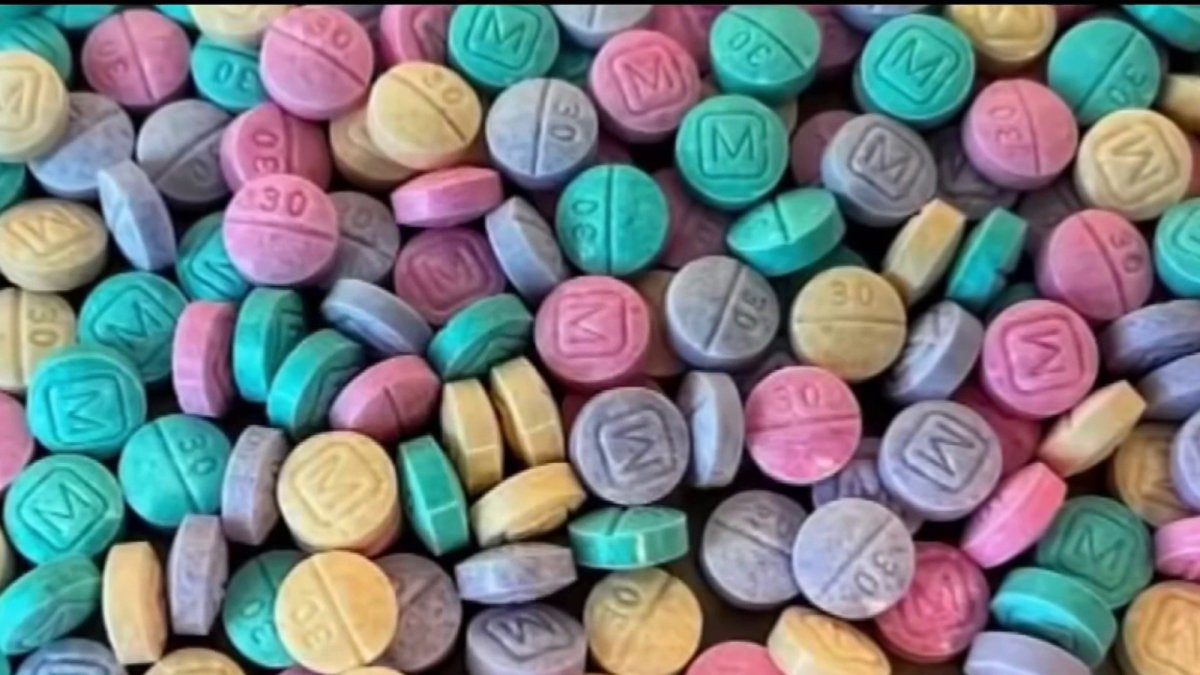
Officials from a local school district and the Drug Enforcement Administration are warning about so-called "rainbow fentanyl," which is appearing in bright colors.
First reported in February, the rainbow pills have been seized in 21 states now, DEA Administrator Anne Milgram said last week. While fentanyl is still more commonly disguised as oxycodone or another prescription drug, sightings of the rainbow pills are on the increase.
“We believe it is being marketed and aimed at young people,” Milgram said.
Get San Diego local news, weather forecasts, sports and lifestyle stories to your inbox. Sign up for NBC San Diego newsletters.
On Tuesday night, an email dropped into the inboxes of parents with children attending classes in the La Mesa-Spring Valley School District, warning them about the drug appearing like candy.
"The United States Drug Enforcement Agency recently identified a new trend in which 'rainbow fentanyl' appears in bright colors and in many forms, including pills, powder and blocks that can resemble sidewalk chalk or candy," the email states, in part. "It can resemble the candy Smarties, so we feel it’s especially important to be alert around Halloween time."
Fentanyl is 50 times more potent than heroin and 100 times more potent than morphine, according to the DEA. Whatever color shape or size fentanyl comes in, it should be considered extremely dangerous, according to authorities, unless it is administered by a medical professional. Drug poisonings are the leading killer of Americans between the ages of 18 and 45.
Local
"Please share with your children that any pill (regardless of its color, shape or size) that does not come from a health care provider or pharmacist can contain fentanyl and can be deadly," the email from La Mesa-Spring Valley continues. "Oftentimes, people purchasing or taking these pills are unaware that they contain fentanyl."
David Feliciano, the superintendent of La Mesa-Spring Valley Schools, told NBC 7 that no specific incident had prompted the warning.
"Out of an abundance of caution, we sent out the letter based on recommendations from the California Department of Public Health," Feliciano said in an email sent Thursday afternoon.
Vastly powerful synthetic drugs like fentanyl are behind record overdose deaths in the U.S. Law enforcement officials nationwide have been struggling to combat the surge of drugs in urban and rural communities. The global coronavirus pandemic has overshadowed the American opioid epidemic, but when overdose deaths surpassed 100,000 during the 12-month period ending in April 2021, it rocketed back into the public consciousness.
Over the past four months, authorities have investigated nearly 400 cases, 51 of them linked to overdoses and 35 tied directly to the two cartels. In addition to being pressed into fake pills, fentanyl powder is also moved into other drugs like cocaine and heroin, Milgram said.
About two-thirds of overdose deaths in the U.S. have been linked to fentanyl or other powerful, illicitly made synthetic opioids.
Jonathan Caulkins, a professor of operations research and public policy at Carnegie Mellon University, said containing synthetics with law enforcement is a challenge because the drug can be made in labs anywhere rather than grown in fields like cocaine or heroin — and because it is so potent and is trafficked in smaller amounts.
“How the heck is law enforcement supposed to find a few metric tons in an economy that trades megatons of raw materials?” Caulkins asked.
Caulkins said the best ways to deal with the fentanyl crisis are to put money toward treatment and increasing the availability of naloxone, a drug that reverses overdoses — but added that using arrests to reduce the supply may be worth trying.
The Associated Press contributed to this report — Ed.